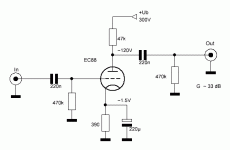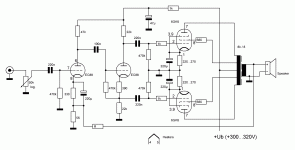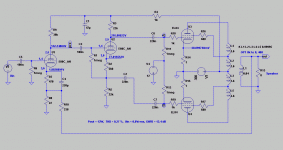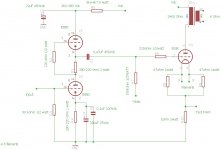in general
in the first stage...in general anywhere.....I couldn't find any examples when I googled.....I guess I'm not the most experienced hobbyist but exploring new tubes and builds intrigues me.....
my next project is a hifi stereo with pp 6gk6...I got heaps of 6av6 / 6at6 / 6c4 etc I was looking for examples that use e88c.... a I found a new one in my stash a siemens and was considering it as number one in the line.....worth it ?
in the first stage...in general anywhere.....I couldn't find any examples when I googled.....I guess I'm not the most experienced hobbyist but exploring new tubes and builds intrigues me.....
my next project is a hifi stereo with pp 6gk6...I got heaps of 6av6 / 6at6 / 6c4 etc I was looking for examples that use e88c.... a I found a new one in my stash a siemens and was considering it as number one in the line.....worth it ?

As a voltage amplifier, try to begin with a circuit like this. The cathode resistor may need to be fine tuned to get 1,5 V at the cathode.
The gain is about 33 dB and maximum output level > 100 Vp_p with some 2 Vp_p as the input level
This stage is suitable to feed high impedance circuits such as phase splitter, LTP, or typical SE output tubes.
The gain is about 33 dB and maximum output level > 100 Vp_p with some 2 Vp_p as the input level
This stage is suitable to feed high impedance circuits such as phase splitter, LTP, or typical SE output tubes.
Attachments
Last edited:
my next project is a hifi stereo with pp 6gk6...
Then you could have an approach like this. I used EC88 at the phase splitter too. The cathode resistor of the phase splitter should be adjusted so that the cathode voltage is 1/4 of the supply voltage, i.e. about 75Vdc.
The negative feedback resistor should be determined. One good way is to install 10k trimmer in the place and adjust to get some 10...14 dB gain reduction.
The output stage is according to the recommendation of GE data sheet. It requires some 10 Vrms drive voltage for full output power, and as the gain of the voltage amplifier stage is about 50, the sensitivity without GNFB is some 0.2 Vrms. With 10...14 dB GNFB the sensitivity is between 0.6...1Vrms, which is quite suitable for line level music sources.
This is the simplest possible circuit, but I can't see any advantage to spend more tubes for example for LTP phase inverter.
There may be something to fix, since this "design" was done during my lunch break
Attachments
Last edited:
nice work !!
Nice work....I was thinking to put a tone stack between e88c and 6c4 and then perhaps another 6c4 as cathodyne phase inverter... as I have these in abundance.....I would have to get another siemens e88c to complete the two channels....ipod is going to be the signal source
its really only curiosity compelling me to give it a try...I think 6av6 would have too much gain.....your help is appreciated !!!!
Nice work....I was thinking to put a tone stack between e88c and 6c4 and then perhaps another 6c4 as cathodyne phase inverter... as I have these in abundance.....I would have to get another siemens e88c to complete the two channels....ipod is going to be the signal source
its really only curiosity compelling me to give it a try...I think 6av6 would have too much gain.....your help is appreciated !!!!
If you add a tone control and use 6C4 tubes, then the gain calculation should be done.
6C4 has mu = 20 and 6AV6 100. All can be done, but it requires some real design work to do.
If I build an amplifier, I would keep the voltage amplifier + phase splitter + output stage as an own section and put tone controls etc. in front of this.
6C4 has mu = 20 and 6AV6 100. All can be done, but it requires some real design work to do.
If I build an amplifier, I would keep the voltage amplifier + phase splitter + output stage as an own section and put tone controls etc. in front of this.
I don't know where you live, Rifraf, but if it is Europe, you might want to search for PC88, which is equivalent to E88C - besides the heater, of course, but very much cheaper than this one, 'cause it is just an ordinary P-series TV tube, not suitable for audio in many heads.
PC86, it's predecessor, is quite similar, btw.
Best regards!
PC86, it's predecessor, is quite similar, btw.
Best regards!
Just wondering if anyone has any schematics with this tube in audio use ?
As I have a bunch of EC88, I tried them as a 2A3 driver: Red LED to cathode and anode choke (LL1668 25mA 100H) and AC coupled to the 2A3 grid. Working point was around 170V and 10mA using Siemens tubes.
A first test has shown pleasant results. Currently I am planning an enclosure for this amp, but am not limited to the EC88, just wanted a single stage driver with enough sensitivity to omit any preamp.
Well... not quite. Two different critters. You can't base similarities between tube types on mu alone. An E88C has a little over twice the transconductance of a 12AT7 and half the anode resistance.Just found a e88c..gold pin......had a quick look at the data sheet....it has similarities to 1/2 a 12at7...U=65 , low noise , sounds ideal for hifi
grid 1 @-1.3v ...a @ 200v about 14 or so ma ....
I wish I had another one now !!!!
Code:
E88C
Va=160V
S=13.5mA/V
Rp=4.8k
U=65
Ia=12.5mA
Vg=-1.25V
12AT7/ECC81; 6AB4/EC92 (single triode versions)
Va=250V
S=5.5mA/V
Rp=10.9k
U=60
Ia=10mA
Vg=-12Vok its not like half a 12at7
ok , I took a quick look at the characterisics as mentioned...its high mu and has an U of 65 and in the voltages that a 12at7 will operate in (I'll get shot for saying that as well I suppose , yet it will ignite the debate !!! )......apart from that I will let better minds mull the differences..other than that I can copy most thing successfully through trial and error (good monkey) and if it dies I will utilise other tubes....what I thought was this could be a nice tube for the first stage...and it has been mentioned as being decent for this
)......apart from that I will let better minds mull the differences..other than that I can copy most thing successfully through trial and error (good monkey) and if it dies I will utilise other tubes....what I thought was this could be a nice tube for the first stage...and it has been mentioned as being decent for this
This is why I was chasing diagrams where it was used in audio....... and I know it started life as a TV tube
I started out making guitar amps and doing it well......and so the hunger grows !!!
But I am no expert !!!
ok , I took a quick look at the characterisics as mentioned...its high mu and has an U of 65 and in the voltages that a 12at7 will operate in (I'll get shot for saying that as well I suppose , yet it will ignite the debate !!!
This is why I was chasing diagrams where it was used in audio....... and I know it started life as a TV tube
I started out making guitar amps and doing it well......and so the hunger grows !!!
But I am no expert !!!
good idea
good idea...its going to be driven with an ipod....could do away with the 6c4 gain stage pre PI
If you add a tone control and use 6C4 tubes, then the gain calculation should be done.
6C4 has mu = 20 and 6AV6 100. All can be done, but it requires some real design work to do.
If I build an amplifier, I would keep the voltage amplifier + phase splitter + output stage as an own section and put tone controls etc. in front of this.
good idea...its going to be driven with an ipod....could do away with the 6c4 gain stage pre PI
unless somebody will curvetrace them, nobody is gonna pick them up a build something
I have some E88C and a uTracer. Give me some time and i will post
curves here.
I found siemens documentation : http://n.manet.nu/tubedoc/E88C.pdf
I also have a few E86C .. and the siemens documentation is here http://n.manet.nu/tubedoc/E86C.pdf
Last edited:
Thanks to jazbo8 who gave me the E88C LTSpice mode.
So I completed the EC88 front end design with simulations.
I "built" the whole amplifier, but with EL84, because I don't have 6GK6 tube model.
However, EL84 is very similar. Below is the result with modified component values (compared with the schematic I posted earlier).
So I completed the EC88 front end design with simulations.
I "built" the whole amplifier, but with EL84, because I don't have 6GK6 tube model.
However, EL84 is very similar. Below is the result with modified component values (compared with the schematic I posted earlier).
Attachments
time to check it out
Thanks guys , most helpful , I got a SE amp with a 6l6 and 2 6av6's ....I'm going to change tube 1 and stick the e88c in and give it a trial...that should tell me what I need to know
at the end of the day its the ear that's going to decide whether its worth while or not....
Thanks guys , most helpful , I got a SE amp with a 6l6 and 2 6av6's ....I'm going to change tube 1 and stick the e88c in and give it a trial...that should tell me what I need to know
at the end of the day its the ear that's going to decide whether its worth while or not....
Hi
in attach some tests on the scheme I sent days ago.
Fig. 1 is a freq answer of the input stage with the srpp of E88C; it seems to be good.
450mV in for 20 Vout
with this signal I got 1 watt on 8 ohms with 0,23% of thd
I test three se trafos: Hammond 1627 se, Sowter SF08 and a proto from F.I.A.T. and 300B-98B
The results are:
HamRIS1w: Hammond freq. answer 1 w
Ham THFR_: Hammond thd vs freq
Sowris1w : Sowter freq. answer 1 w
THFr_12-2 : Sowter thd vs freq 1 w
F.I.A.T. Fris_1w F.IA.T. freq answer 1w
F.I.A.T. THFR_1w thd vs freq
Also a UL connection with Hammond 1627se ( it has a UL tap) and KT150 and 6 dB of feedback
Fig.15-KT150UL_fb6dB freq answer 1w
Fig.17-KT150UL_fb_1w_thd_freq thd vs freq 1w
All these test are on Audioreview magazine im Italy where I have a collaboration
Bye
Walter
in attach some tests on the scheme I sent days ago.
Fig. 1 is a freq answer of the input stage with the srpp of E88C; it seems to be good.
450mV in for 20 Vout
with this signal I got 1 watt on 8 ohms with 0,23% of thd
I test three se trafos: Hammond 1627 se, Sowter SF08 and a proto from F.I.A.T. and 300B-98B
The results are:
HamRIS1w: Hammond freq. answer 1 w
Ham THFR_: Hammond thd vs freq
Sowris1w : Sowter freq. answer 1 w
THFr_12-2 : Sowter thd vs freq 1 w
F.I.A.T. Fris_1w F.IA.T. freq answer 1w
F.I.A.T. THFR_1w thd vs freq
Also a UL connection with Hammond 1627se ( it has a UL tap) and KT150 and 6 dB of feedback
Fig.15-KT150UL_fb6dB freq answer 1w
Fig.17-KT150UL_fb_1w_thd_freq thd vs freq 1w
All these test are on Audioreview magazine im Italy where I have a collaboration
Bye
Walter
Attachments
-
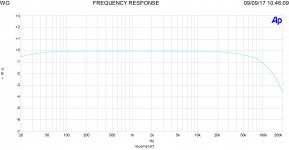 Fig. 1_Input_450mVin_20Vout_rispfreq.jpg578.6 KB · Views: 493
Fig. 1_Input_450mVin_20Vout_rispfreq.jpg578.6 KB · Views: 493 -
HAMRIS1W.pdf79.9 KB · Views: 112
-
THFR_1W.pdf49 KB · Views: 103
-
SOWRIS1W.pdf81.8 KB · Views: 98
-
THFR_1W-2.pdf51.2 KB · Views: 64
-
FIRIS_1W.pdf81.7 KB · Views: 87
-
THFR_1W-1.pdf50.5 KB · Views: 75
-
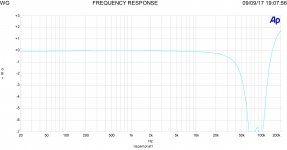 Fig.15-KT150UL_fb6dB_1w_risp.jpg587.7 KB · Views: 463
Fig.15-KT150UL_fb6dB_1w_risp.jpg587.7 KB · Views: 463 -
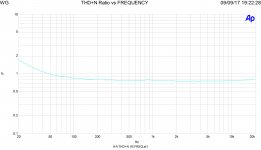 Fig.17-KT150UL_fb6dB_1w_thd_freq.jpg543.8 KB · Views: 450
Fig.17-KT150UL_fb6dB_1w_thd_freq.jpg543.8 KB · Views: 450
Last edited:
- Status
- This old topic is closed. If you want to reopen this topic, contact a moderator using the "Report Post" button.
- Home
- Amplifiers
- Tubes / Valves
- why not E88C
